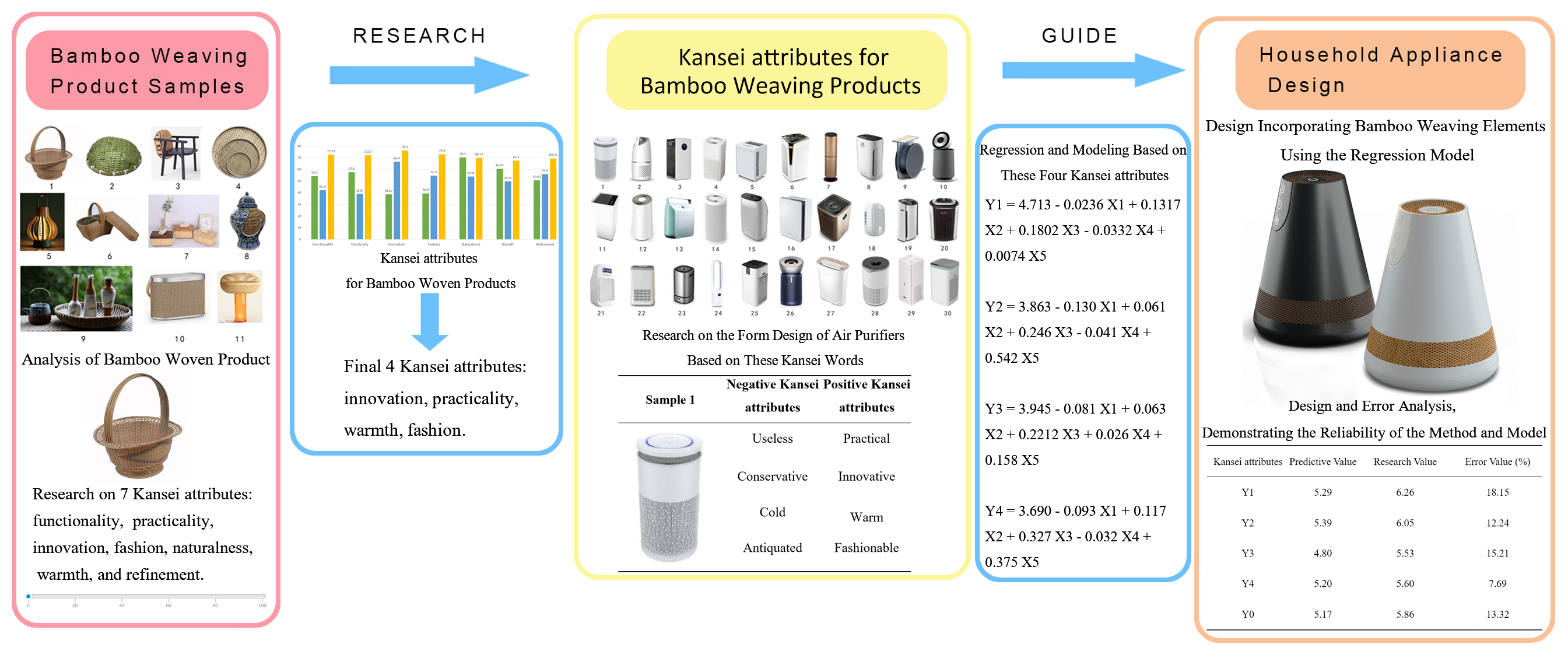
As global demand for sustainable materials grows, traditional bamboo weaving remains an underutilized eco-solution. This study bridges that gap by transforming this renewable craft into functional modern designs, offering both cultural preservation and environmental benefits. This study revitalizes traditional bamboo weaving through sustainable integration into air purifier design by: modernizing craftsmanship via scientific frameworks, innovating bamboo applications for contemporary needs, and securing their cultural-ecological relevance in evolving lifestyles. Consumers’ attitudes toward bamboo-woven products and their most valued design characteristics are investigated through a questionnaire survey. Based on the findings, perceptual design preferences for bamboo-woven products are summarized and applied. Using air purifiers as a case study, the Kansei Engineering design method is employed to develop a model that aligns with consumers’ Kansei attributes. This design model is then refined to derive an optimal version. The study also includes practical application in designing an air purifier guided by the optimal design model. A final verification demonstrates that the design model meets expectations and offers an operable approach to integrating traditional bamboo weaving with modern product design. This work challenges the tradition-modernity divide, positioning craftsmanship as a dynamic driver of regenerative futures.
Total file downloads: 10